Fruit—nature’s candy, right? It’s sweet, juicy, refreshing, and packed with vitamins. But for someone living with diabetes, that same innocent-looking fruit bowl can be a bit of a sugar landmine.
We’re not saying you need to break up with fruit completely. No dramatic farewell speeches to your bananas or breakup texts to your mangoes. But it is important to know which fruits can cause your blood sugar to do the cha-cha—up, up, and away.
While some fruits are low on the glycemic index and offer a safe, steady source of natural sweetness, others can spike your glucose faster than you can say “fruit salad.”
This article breaks down 11 types of fruit that are better admired from afar (or at least eaten in serious moderation) if you’re trying to keep your blood sugar levels in check.
1. Bananas (Especially Overripe)
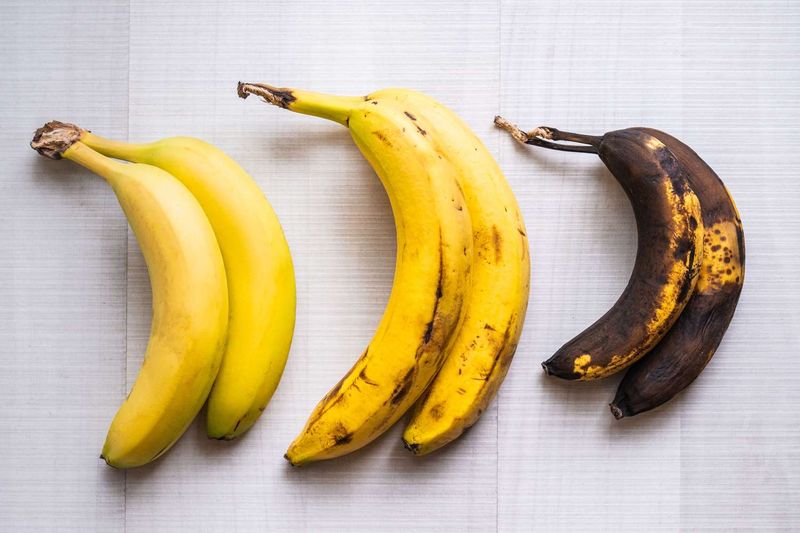
That soft, sweet banana in your smoothie might feel like a healthy choice, but it could be messing with your blood sugar more than you think. As bananas ripen, their starch turns into simple sugars—and fast.
The riper they get, the higher their glycemic index climbs. This means your body digests them quicker, leading to sudden glucose spikes. For someone managing diabetes, that’s like rolling a dice with every bite.
Sure, they’re rich in potassium and fiber, but portion control is key here. A small greenish banana is far less problematic than a fully spotted one that tastes like syrup. So if you’re craving banana flavor, go for a small one or try adding just a few slices to something else rather than eating the whole thing solo.
Your smoothie can still taste good—just maybe not that good.
2. Mangoes
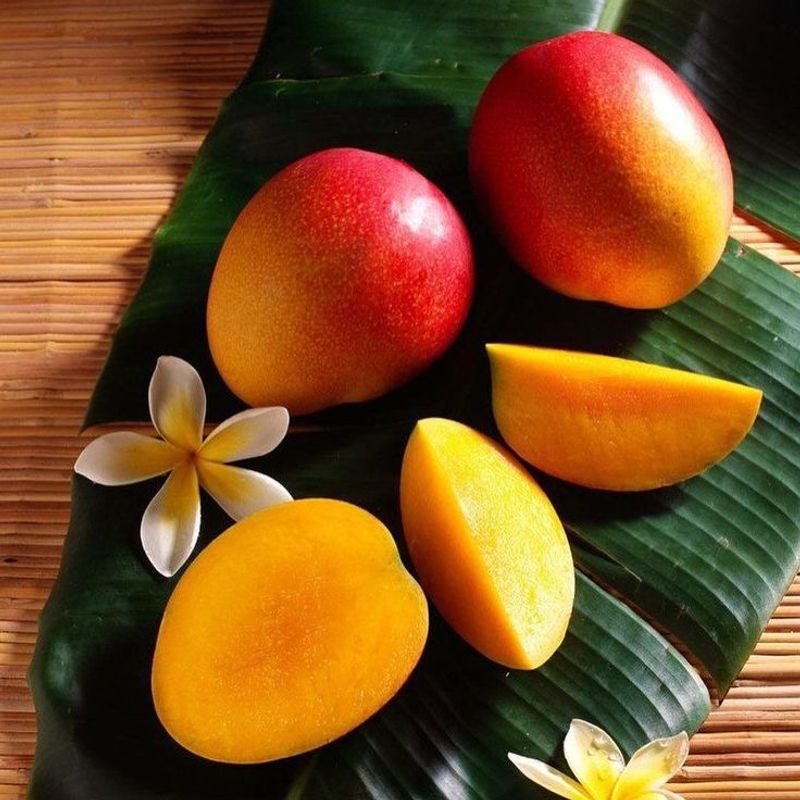
Tropical, juicy, and downright irresistible—mangoes are like the dessert of the fruit world. But their sugar content is off the charts, especially for anyone watching their glucose levels.
Even just one medium mango can pack more than 45 grams of carbs. That’s more than a slice of cake in some cases, and it doesn’t come with the same kind of warning label. The natural sugar in mangoes (mainly fructose) gets absorbed quickly, which can cause post-meal sugar spikes you weren’t expecting.
It’s not about banning mangoes forever, but moderation is non-negotiable. Maybe a few slices in a fruit salad or smoothie where other fiber-rich ingredients can buffer the hit.
Because let’s face it: nothing says “blood sugar chaos” quite like devouring an entire mango under the illusion of eating healthy.
3. Grapes
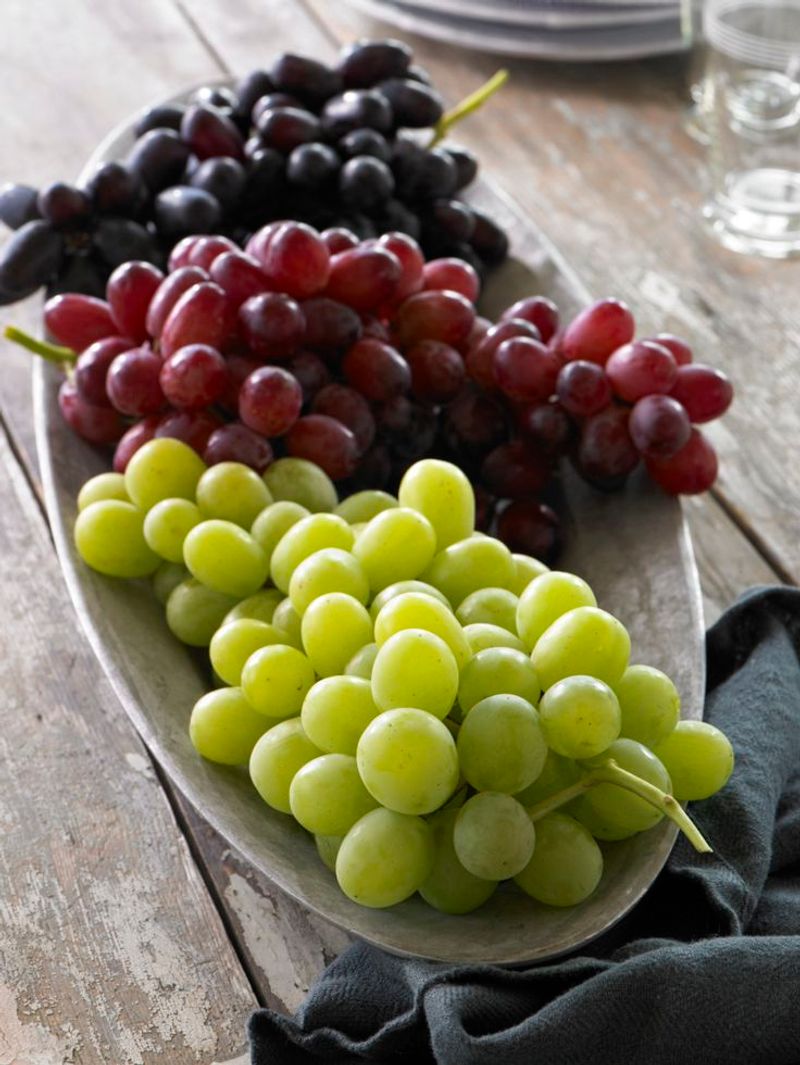
Pop one, pop two, and suddenly you’ve inhaled a whole bowl. Grapes are sneaky like that—tiny, sweet, and way too easy to overdo.
Despite their size, they’re surprisingly high in sugar. One cup of grapes has around 23 grams of natural sugar, and because they’re so easy to snack on, most people end up eating way more than that without thinking. Their high glycemic index doesn’t do any favors either—it means they raise your blood sugar quickly, which is not ideal for someone with diabetes.
And don’t be fooled by their “natural” label. Whether they’re red, green, or black, all grapes carry similar sugar loads. If you really can’t resist them, try freezing a few for a controlled sweet treat.
Just remember: even nature’s candy needs limits when your blood sugar is on the line.
4. Cherries
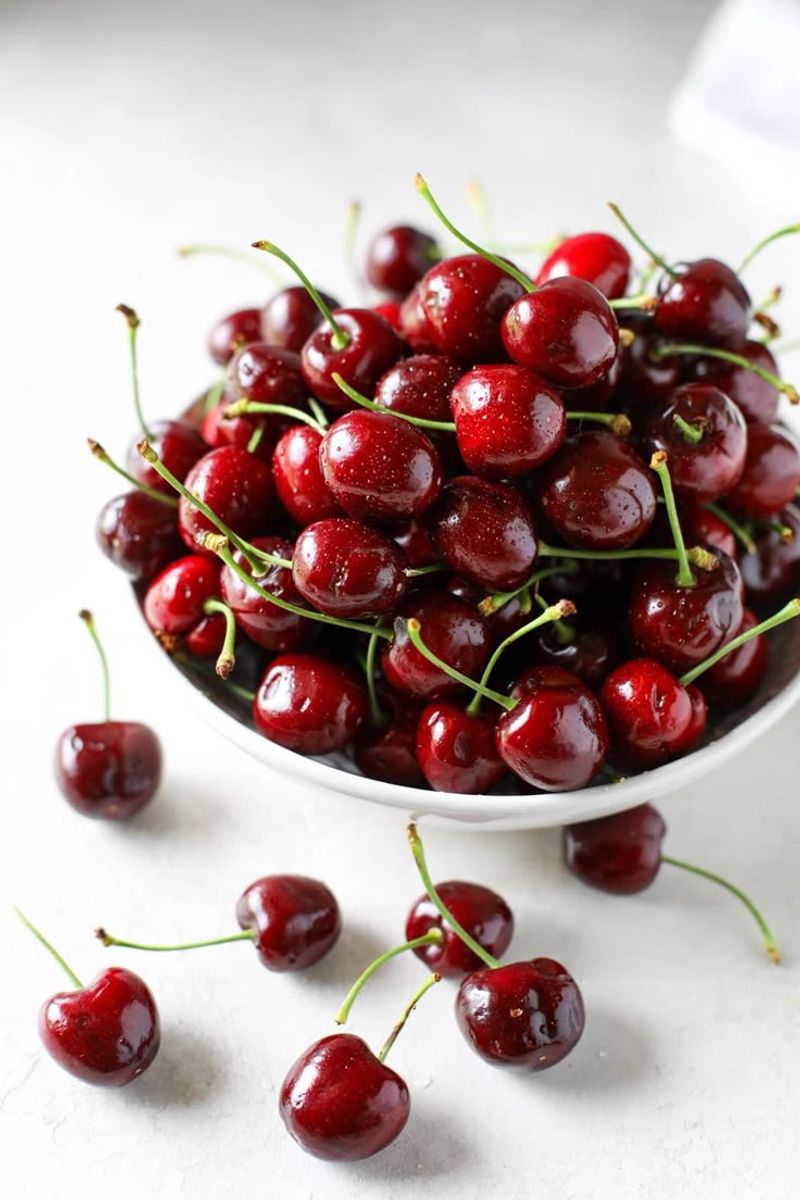
These ruby-red beauties might look innocent, but they pack a sweet punch. Sweet cherries—especially the kind you grab by the bag in summer—are sugar bombs in disguise.
A single cup of cherries can contain over 18 grams of sugar. And the high glycemic load means they can nudge your blood glucose upward faster than you’d expect. It’s that sugary sweetness combined with a small size that makes them a danger zone for mindless munching.
Tart cherries are a better option, but they’re often less available and not quite as fun to eat raw. If you’re eyeing cherries as a snack, think “garnish” rather than “main event.” Toss a few into a low-sugar yogurt or oatmeal—don’t make them the whole meal.
Because when it comes to cherries and diabetes, a little restraint goes a long way.
5. Pineapple
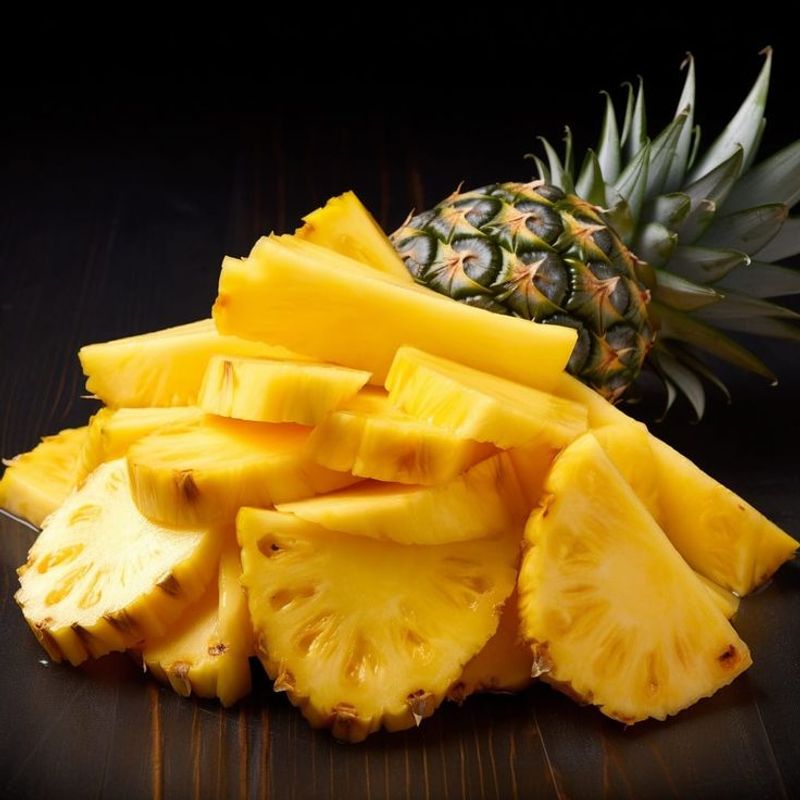
It tastes like vacation, but pineapple can crash your blood sugar party fast. Behind that golden glow lies a fruit that’s surprisingly high on the glycemic index—and yes, it hits hard.
Even just one cup of fresh pineapple contains more than 22 grams of sugar. Add its quick-digesting nature to the mix and you’ve got a recipe for a blood sugar spike. That sweet-tart flavor might be refreshing, but your pancreas is probably sweating behind the scenes.
Canned pineapple is even worse—often soaked in syrup, turning a sugary fruit into a full-blown glucose grenade. If you’re determined to indulge, keep the portion small and pair it with some protein or fat to slow down absorption.
Pineapple’s delicious, no doubt. But when diabetes is in the picture, it’s best kept to occasional cameos.
6. Watermelon
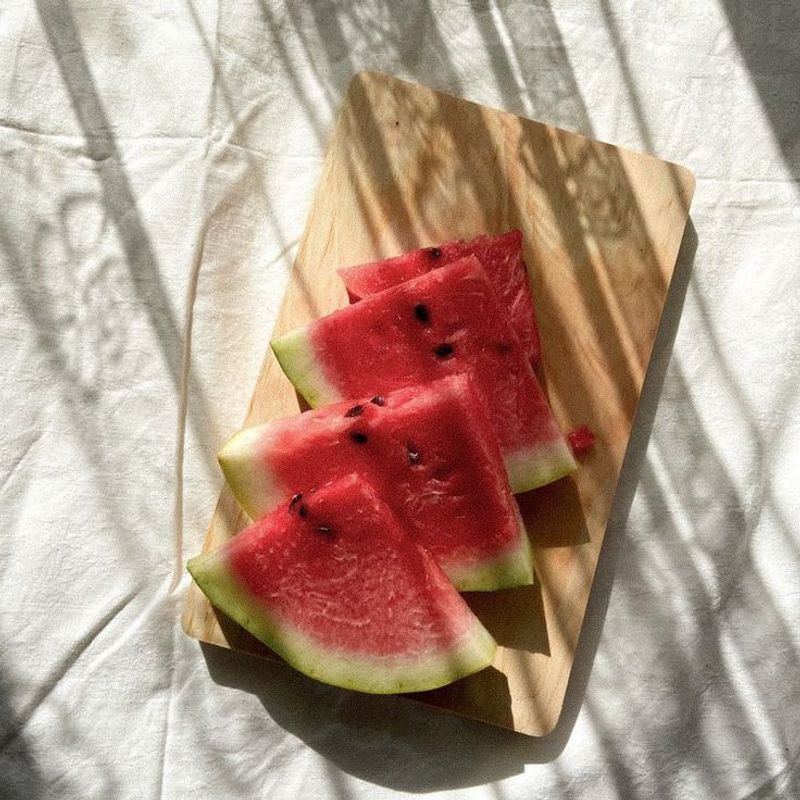
Few things scream summer like a wedge of cold watermelon. But if you have diabetes, it’s worth knowing that this juicy favorite may be more sugar than it seems.
While it’s mostly water, watermelon has a high glycemic index, meaning it can rapidly raise your blood sugar. A single cup can contain over 9 grams of sugar—and let’s be real, when’s the last time you stopped at one cup?
Its light texture makes it easy to overeat without even realizing it. Plus, it lacks the fiber and fat that help keep blood glucose levels stable. You might enjoy a little now and then, but this is one fruit that deserves a side of mindfulness.
Watermelon might quench your thirst, but it can also leave your blood sugar parched for balance.
7. Lychees
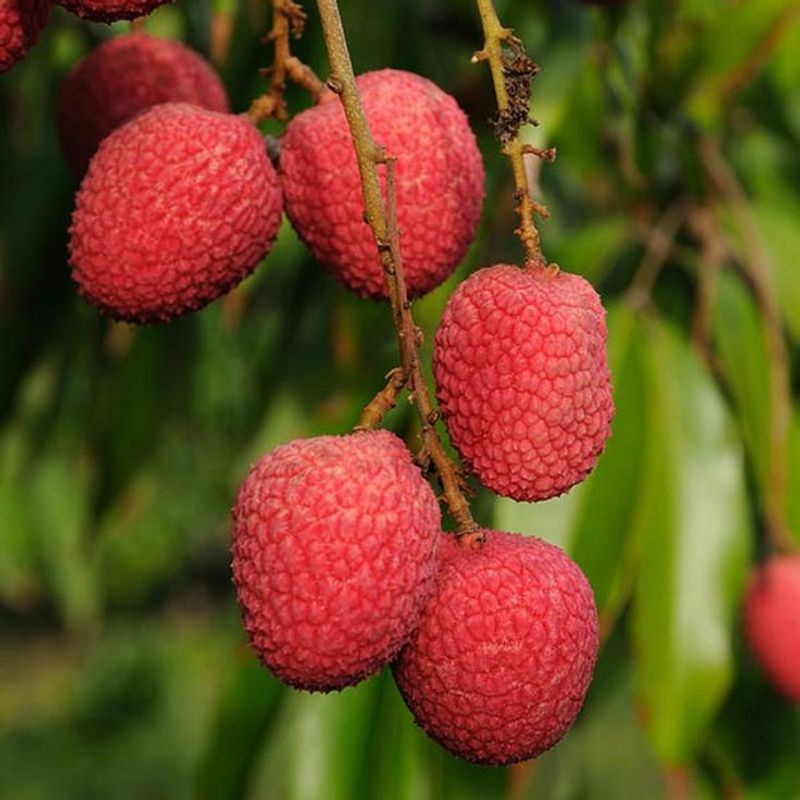
Exotic and fragrant, lychees have a delicate taste that makes them feel like a luxury. But they’re also bursting with sugar—something that’s far from luxurious for people with diabetes.
Just 10 small lychees can contain around 29 grams of sugar. That’s about as much as a can of soda. Because they’re so small and juicy, it’s easy to eat them like candy, quickly racking up carbs and calories.
Unlike berries or apples, lychees lack enough fiber to buffer the sugar absorption. Your blood sugar goes for a ride—fast and bumpy. While they’re rich in vitamin C and antioxidants, the risks outweigh the rewards for those keeping close tabs on glucose.
If you’re craving a sweet tropical fix, try a small portion with a protein snack. But keep lychees in the “special treat” category, not your daily snack bowl.
8. Dried Fruit (e.g., Raisins, Dates, Figs)
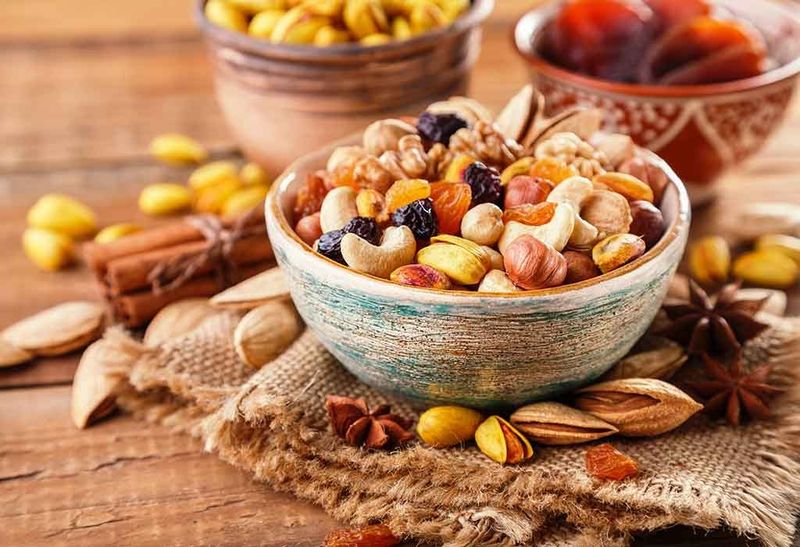
When fruit gets dried, it doesn’t lose the sugar—it just loses the water. That makes dried fruit incredibly concentrated and dangerously easy to overeat.
Just a handful of raisins? That’s the sugar of an entire bunch of grapes. A couple of dates? Nearly 30 grams of carbs. Without the water content to fill you up, dried fruits can lead to big glucose spikes with tiny portions.
Plus, many commercial dried fruits have added sugar or are processed with sweet syrups to enhance flavor. It’s like eating fruit on steroids—sweet, sticky steroids.
If you absolutely need that chewy texture or burst of sweetness, go for unsweetened varieties and limit the serving to a tablespoon or two. Or better yet, skip the dried stuff and go for a fresh alternative with more water and fiber.
Dried fruit may be small, but its impact on blood sugar is anything but.
9. Canned Fruit in Syrup
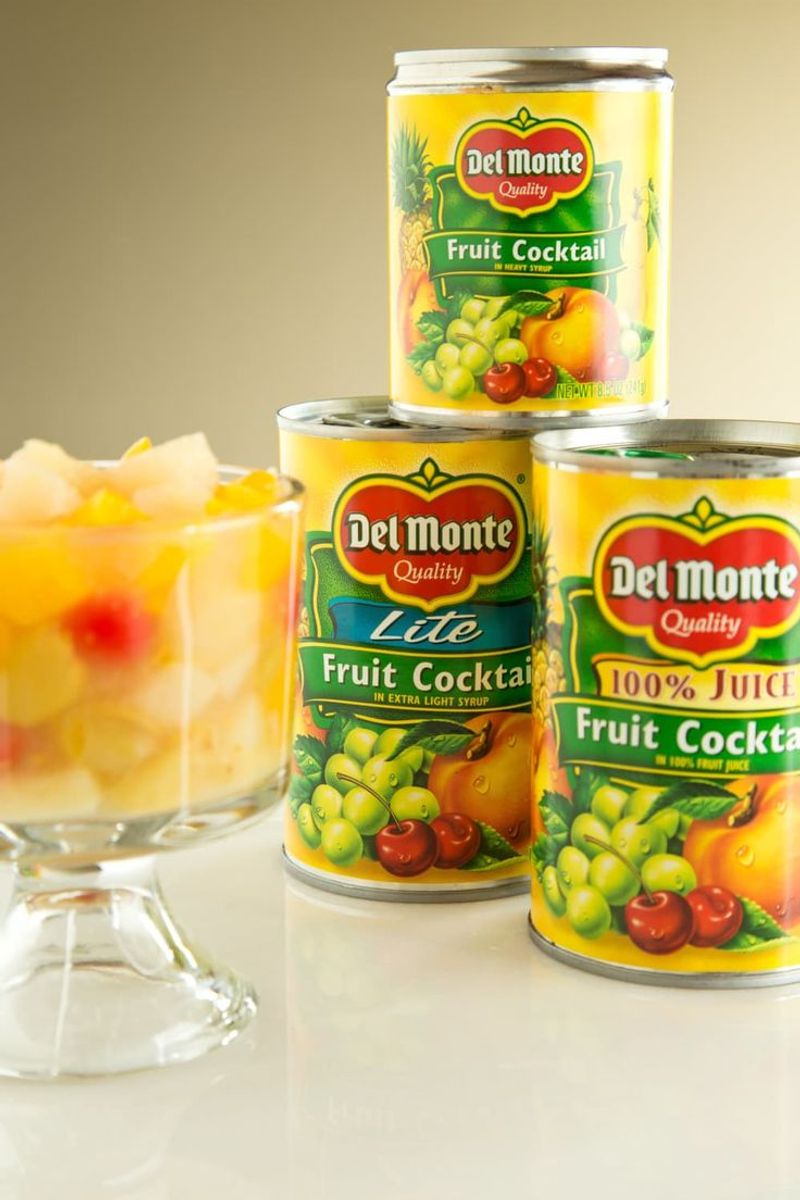
At first glance, it seems innocent—just fruit in a can. But one peek at the label and you’ll see the real villain: syrup. Thick, sugary syrup that turns even healthy fruits into diabetes landmines.
Heavy syrup is essentially fruit swimming in liquid sugar. Even “light syrup” isn’t as light as you’d hope. It adds unnecessary carbs and negates the natural goodness of the fruit itself.
Even if the fruit started out wholesome—like peaches or pears—the syrup transforms it into a dessert, not a healthy side. Your blood sugar doesn’t care if it’s “natural” sugar or not; a spike is still a spike.
If you must go canned, look for labels that say “packed in water” or “100% fruit juice,” and even then, drain the liquid and rinse the fruit. Your body will thank you for ditching the sugar bath.
10. Fruit Juices (Even 100% Juice)
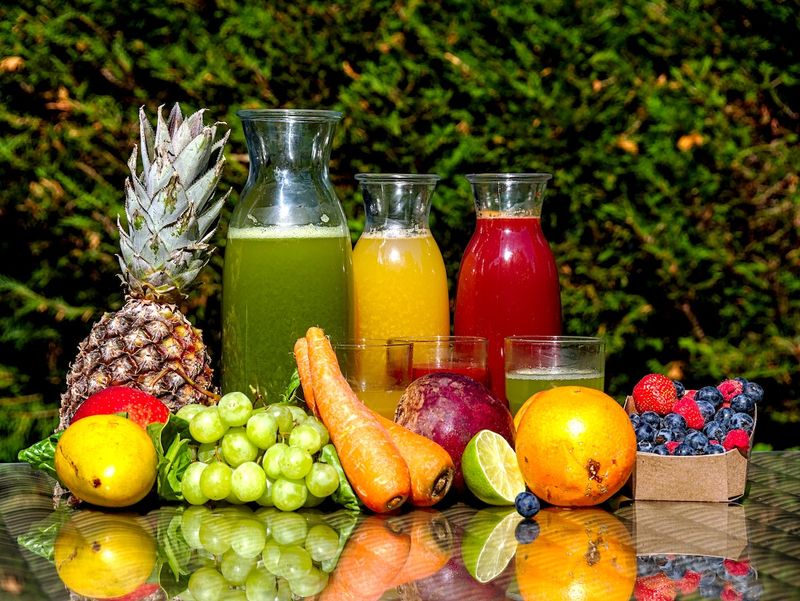
Think a glass of orange juice is a wholesome start to your day? Think again. Juice—even the “no sugar added” kind—is just fruit without the fiber.
When you remove the pulp and skin, you’re stripping away everything that slows sugar absorption. What’s left is basically a sugary drink, no different from soda in how it impacts your blood glucose.
A single cup of 100% apple juice can contain over 25 grams of sugar. That’s more than some candy bars. And because it’s liquid, it rushes through your system fast, causing a rapid spike in blood sugar.
Smoothies made with whole fruit are a slightly better option, but even then, it’s easy to pack in too much of a good thing. If you want to stay on your diabetes management A-game, treat juice like a rare indulgence—not a daily habit.
11. Persimmons
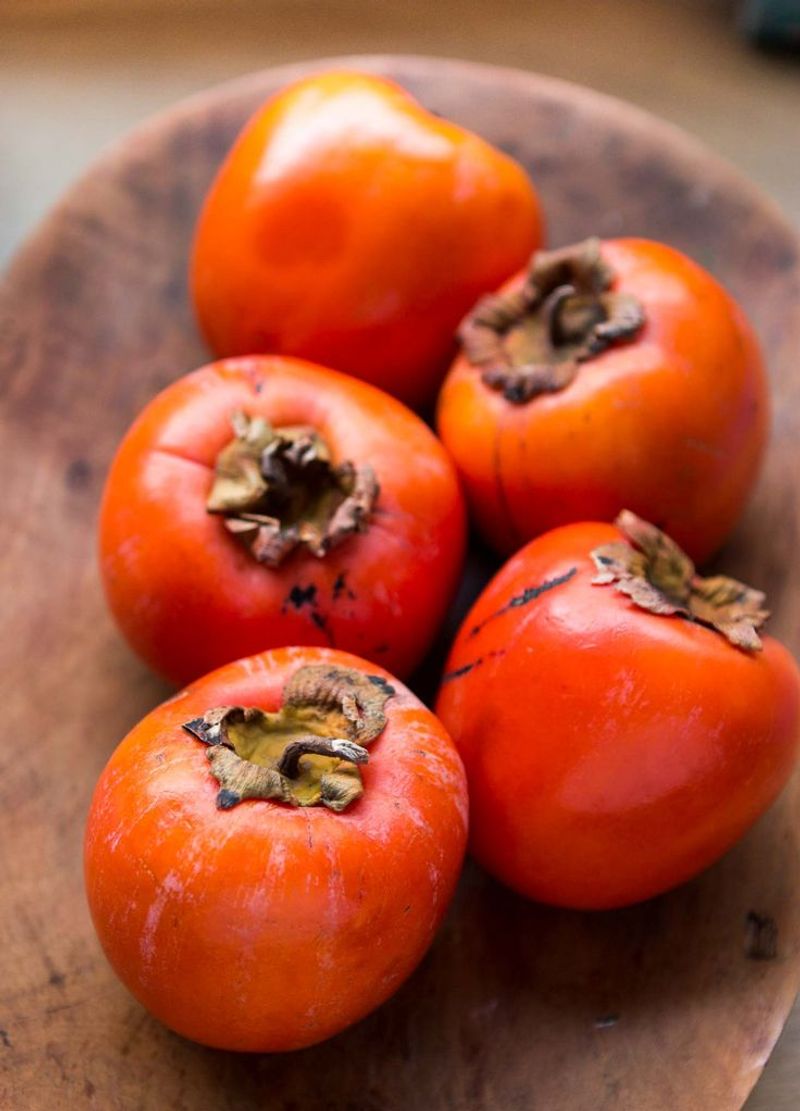
Golden, honey-sweet, and often overlooked, persimmons seem like a dreamy snack. But behind that sugary smoothness is a carb count that can catch you off guard.
One medium persimmon contains around 31 grams of sugar—yes, really. That’s higher than many desserts, and without much fiber to slow the digestion, it can spike your blood glucose quickly.
It’s easy to get carried away with this fall favorite, especially since it tastes more like candy than fruit. The issue? Its sweetness is deceptive. Even when it feels healthy, your blood sugar says otherwise.
If you adore persimmons, stick to a thin slice or two paired with a protein source. But for most people managing diabetes, this fruit is best saved for the occasional treat, not everyday snacking.
Leave a comment